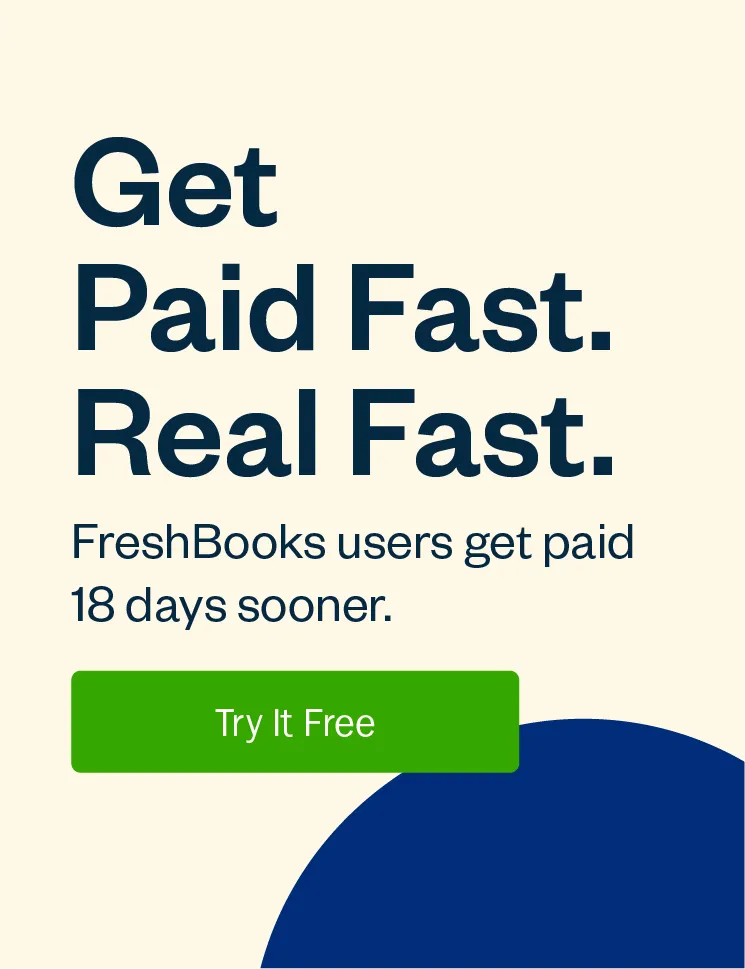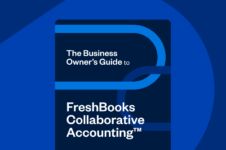Is your business having cash flow problems? Here are some small business secrets (not really) to help you get paid faster!

Are slow client payments killing your business? Are you tired of waiting for paper checks in the mail? Now, there’s a better way for small business owners like you to get paid, and get paid faster!
If your clients pay you on time and according to your invoice payment terms, then the issue likely lies in your payment or invoicing methods (and if they don’t, well, that’s another issue entirely). Here, we’ll look at why your processes are stopping you from getting paid faster, plus 4 things you can do to get them up to speed.
Table of Contents
Problem #1: Outdated Invoicing Methods
Are you still making every invoice from scratch? You’re wasting your time if you type out every client detail, line item, and expense in a new Excel document whenever you bill for a project.
Take a few seconds to estimate how much time you’ve spent on invoicing in the last month alone. Now imagine what you could’ve done with that time instead.
Manually prepared invoices often take a long time to build out (even when you use a template). The issue compounds when they include many expenses and line items with lengthy descriptions.
Sure, when you only issue a handful of invoices each month, the time spent might seem negligible. But you want to send out more than a handful of invoices, right? When your business grows, do you really want to spend so much of your time on a process that doesn’t add any value for your clients?
And let’s not forget the amount of time you spend following up on these invoices—or the amount of money left on the table (and cash flow problems) if you forget to follow up altogether.
If you want to get paid faster and improve your cash flow, the first area to make improvements in is your own invoicing process.
Problem #2: Outdated Payment Methods
Let’s face it. Having to wait for a check in the mail is a pain.
If a client doesn’t tell you when the payment is en route, you’ll never know for sure—which can result in uncertainty about whether you should follow up or not. You’ll need to deposit the check electronically or at your local bank once you receive it, and even then, you still don’t get your money immediately. Banks hold funds until the check clears…ugh, cash flow pain, anyone?
Although some clients prefer to work this way, the paper check method can lead to serious cash flow problems for even the best money managers. Waiting on snail mail and bank policies means you don’t have access to your money right away. That can make it difficult to pay vendors and contractors, buy necessary tools and supplies for your business, or even pay yourself.
Old school customer payments can make trouble for your business in other ways too.
Recording payments manually leaves room for error. Typing the wrong number into a spreadsheet, for instance, can dramatically impact your bottom line or wreak havoc on your finances come tax time.
And unless you have a finance background or are savvy with spreadsheets, you’ll have difficulty using your payment data to prepare your taxes, assess the health of your business, and make well-informed decisions on your company’s future.
An updated payment system with built-in reporting helps you maintain a positive cash flow. This ensures you’re able to keep your organization running smoothly through any season of business. Plus, getting access to your money sooner means you’re better positioned to capitalize on new opportunities when they appear.
4 Tips for Easier, Faster Client Payments
Are you ready to stop waiting for client payments and get paid on time more often? Here are 4 tips to streamline your payment process to get customers to pay faster, so you can reclaim your time and get back to growing your business, expanding your team, or just planning for what’s next.
1. Invoice Frequently for Your Great Work
For service-based businesses, billing upfront or collecting a retainer is ideal. But if you only invoice clients when the work is done, don’t wait until the end of the month to send invoices. Instead, send them once a week—or every other week at most (with detailed invoice payment terms).
The shorter the loop between doing the work and getting paid, the better. If your clients take 30 days to pay an invoice and you send invoices once a month, you could be waiting two months or more to get paid for your time.
Alternatively, cut out invoicing altogether with FreshBooks’ Checkout Links.
This useful feature allows clients to quickly make payments for fixed-price products or services—all without you ever needing to send an invoice. If you bill for the same amount on a regular basis, setting up Checkout Links for each product or service offering can save you a ton of time you’d otherwise spend on invoicing.
2. Follow Up on Unpaid Invoices
Of course, sending digital invoices doesn’t necessarily guarantee payment. But when you use accounting software like FreshBooks, it keeps track of when someone has viewed your invoice and notifies you of overdue ones.
Sometimes, a gentle reminder is all a slow client needs to pay up. FreshBooks takes this task off your to-do list. Set up an automatic reminder (or several) for each Client Account, or directly on the Invoice itself.
The payment reminders kick in when customers don’t pay you by the deadline. The software automatically sends out notification emails on your behalf, so you’re never left second-guessing. Never again wonder whether they actually received your invoice or worry that your reminder email may be seen as being too pushy.
And for those who need a greater incentive to pay on time, you can also set late fees (either a flat fee or a percentage of the invoice) that get automatically added to unpaid invoices when the specifications are met.
Run a more efficient business and get paid faster with just a few clicks.
3. Encourage Automatic Deposits to Your Bank Account
Accepting credit cards makes it easy and convenient for clients to pay you, but the fees do cut into your profits. To avoid this, ask clients if they’re willing to pay you via Bank Transfer (ACH). You’ll probably have to give them your bank information and sign an authorization form, or sign up with a financial technology company or online service that allows you to get paid automatically.
You can also set up Recurring Payments through the FreshBooks accounting software.
This feature allows you to charge your client’s credit card, debit card, PayPal account, or bank transfer details according to your chosen payment schedule. Set it up once, and you’ll never have to send another invoice for the project for as long as the Retainer is active. Not only does this payment method present you as a professional, but it also relieves your client of another responsibility and removes the friction preventing you from getting paid faster.
While this may take a little more time to set up, the direct deposit option can save you a considerable amount of time and money in the long run.
4. Establish Expectations From the Get-Go
When you start working with a new client, talk to them about your invoicing and preferred payment methods. For instance, if you offer a discount on early payments or digital payments, make that clear to them. If you have a late fee policy, tell them upfront and list it in your invoice payment terms. Communicating these policies upfront gives you a better chance of getting paid on your terms—not by whatever methods the client prefers.
In some cases, you may not have a choice but to accept paper checks. Some companies have their own accounting policies and can’t (or won’t) make an exception for you. If you want to work with these clients, you’ll have to deal with their payment policies.
Just try to make sure that the clients who pay you via snail mail don’t account for a large percentage of your monthly income. That way, slow payments won’t hinder your ability to pay your bills.
Two Birds With One Stone: Solve Your Invoicing and Payment Woes With FreshBooks
Here’s the truth: You want to make it as easy for clients to work with you as possible.
When clients have trouble with your invoicing and payment methods, they see you as less capable than you are. Plus, software like Word and Excel are clunky. They weren’t designed for invoicing, and can ultimately ruin your client experience. Their impressions of you will suffer—and as a result, so will your relationships with them.
Digital solutions like FreshBooks don’t just help you send invoices more quickly. It makes it easier for clients to pay you too. Once they receive an invoice, they can pay via credit card, Apple Pay, Bank Transfer (ACH), or PayPal in seconds. And no matter how they pay, your invoicing process stays the same.
Our cloud-based accounting platform allows you to access your company’s financial information anytime, anywhere from any computer or mobile device with internet access. This makes it easier to issue invoices, track your income, and run your business remotely, whether you’re on vacation or in your office.
Late payments and stubborn clients can wreak havoc on small businesses, lead to cash flow issues, and really take the joy out of running a business. Try out the above tips to start moving away from checks and snail mail, improve your processes, and get more clients to pay you on time. Before you know it, your inbox will be overflowing with payment notifications!

Written by Feli Oliveros, Freelance Contributor
Posted on May 24, 2018

 Still Invoicing with Word & Excel? 5 Reasons to Stop
Still Invoicing with Word & Excel? 5 Reasons to Stop![Is Your Business Ready for Cloud Accounting? [Self-Assessment] cover image](https://prod-blog-k8s.freshenv.com/blog/wp-content/uploads/2017/07/cloud-600x400.jpg) Is Your Business Ready for Cloud Accounting? [Self-Assessment]
Is Your Business Ready for Cloud Accounting? [Self-Assessment] Is Timing Everything When Sending Invoices?
Is Timing Everything When Sending Invoices?





